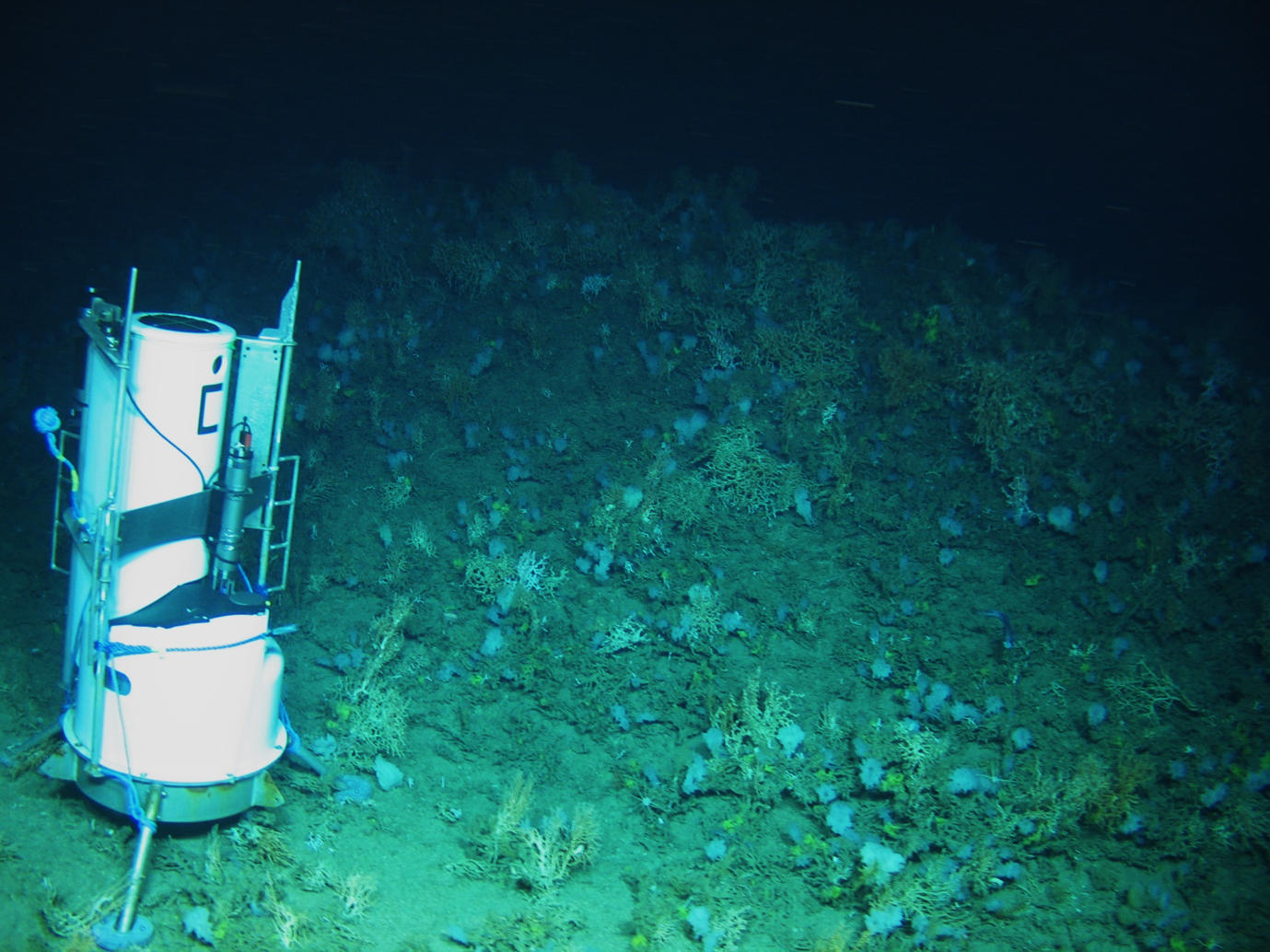Worst things can happen at sea…

Prof. Andy Wheeler updates us on the first of three blog posts from our most recent research survey
Or so the saying goes, not sure if its true nowadays but certainly the sea can be unforgiving. Stormy seas have hampered may a well planned marine survey and technical failures can be common due to the corrosive nature of the sea and the constant motion of the ship (putting electronic equipment into seawater and pressurising it at depth is asking for trouble – right?).
I am Professor Andy Wheeler, the chief scientist on the CE22013 SPeeD survey (Sediment Plume Sampling, Bedrock Drilling and Coral Surveying) on the RV Celtic Explorer and I’d like to tell you what we managed to do despite the odds.
We had ambitious plans for this survey:
- To continue environmental studies of cold-water coral habitats in the Belgica Mound SAC,
- To detect, track and sample sediment plumes created through seabed trawling down the Whittard Canyon,
- and to rockdrill bedrock exposure in Whittard, Goban Spur and Porcupine Bank to simply see what rock formations are there (we have no idea of the geology of the southern Irish margins!).
However, despite stringent and meticulous behaviour and measures involving numerous pre-boarding PCR and antigen tests COVID unavoidably managed, inevitably these days, to get on-board. We immediately isolated and retired to port cancelling most of our survey as we responsibly got the virus under control.
However, we’re tenacious and before and after isolation we managed to complete our Belgica SAC objectives involving:

- the recovery of 2 Little MonSta benthic landers (Beyonce and President Higgins) after 1 year monitoring currents next to a Moira Mound cold-water coral reefs,
- the deployment of 2 more Little MonStas (Apollo and Charlotte) in a ridged coral reef measuring currents, water turbidity, dissolved oxygen, pH, temperature and salinity as well as monitoring and sampling sediments,
- the collection of coral samples from 5 sites (on Therese and Little Therese Mounds) and plankton samples from 3 (offshore Cork, Galway and the Belgica Mounds) to check for microplastics,
- the mapping of 256 km2 of the Belgica Mounds (including the Moira Mounds) with a shipbased multibeam echosounder,
- and, the collection of water samples (for sediment concentrations and microplastics) at the seabed, mid-water and near the surface at 5 sites.
So I would say even against the odds, good things can happen at sea.
Two more blogs will follow this one, firstly by Dr Alicia Mateos Cardenas on her microplastic work and finally by Jess Harty on her first experiences of going to sea on this dramatic survey – say tuned!
The cruise report is available here
Marine Geosciences Research Group
University College Cork
Contact us
School of Biological, Earth and Environmental Sciences, North Mall Campus, University College Cork, North Mall, Cork City, T23 TK30
